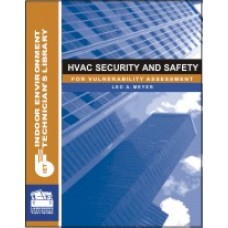Is today a good day for grocery shopping? Check your weather app to help you decide whether or not you may be putting yourself in harm's way. Microbiologists, epidemiologists, and infectious disease clinicians are continuing to collect data showing that low humidity significantly increases viral transmission and COVID-19 illness.
The most relevant humidity measurement for health is indoor relative humidity (RH) for several reasons. First, we spend most of our time indoors. Secondly, RH denotes the difference between how much moisture the air can possibly hold at a given temperature versus how much water vapor is actually in the air. This is key because this water vapor “deficit” indicates the evaporative forces on any source of moisture, such as juicy human beings, in that space.
Unfortunately, very few buildings have hygrometers in place to measure indoor RH. The good news, however, is that you can use commonly reported outdoor absolute humidity (AH) as an alternate indicator. The AH, expressed in grams of moisture per cubic meter of air (g/m3), is the actual weight of water vapor in air independent of temperature. Assuming a fairly constant indoor temperature based on our comfort, we can approximate indoor RH based on outdoor AH. Do not, however, confuse outdoor RH with indoor RH because of the temperature differences in wintertime.
An abundance of data from across the world are revealing that the highest number of COVID-19 cases occur following periods of low AH, between 3-9 g/m3. This means that weather affects much more than our comfort. In fact, we have seen this before with other seasonal viral diseases, such as influenza and other coronavirus diseases. Data on SARS-CoV and MERS-CoV-2 show that dry environments favor virus survival and activity with more illness during cold winter months. The correlation does not stop with viruses. Many bacterial diseases, especially those involving our respiratory system, are more deadly in dry conditions. For example, a region in Africa referred to as the meningitis belt uses forecasts of dry weather to predict disease outbreaks.
If low humidity is associated with increases in both viral and bacterial illnesses, what does this say about dry air and our immune systems? This question was answered in a brilliant study done by Dr. Akiko Iwasaki and her colleagues at Yale University. In carefully controlled experiments, they revealed that the mammalian respiratory immune system is significantly harmed by dry air in multiple places. When the humidity was low, viruses were more able to invade tissues and cause severe disease. In other words, we need properly humidified air to fight COVID-19.
In summary, the association between low humidity and increased disease from SARS-CoV-2 is real, important, and cannot be discounted by the presence of other variables. Weather-related COVID-19 illness not only gives us an alert for increased danger during dry periods, it also signifies the importance of creating safer buildings by properly maintaining indoor humidification levels. Wallet, watch, keys, mask — and, now, your weather app.
Reference: Analysis of the Transmission Dynamics of COVID-19: An Open Evidence Review. 2020 Jefferson T, Spencer EA, Plüddemann A, Roberts N, Heneghan C.










